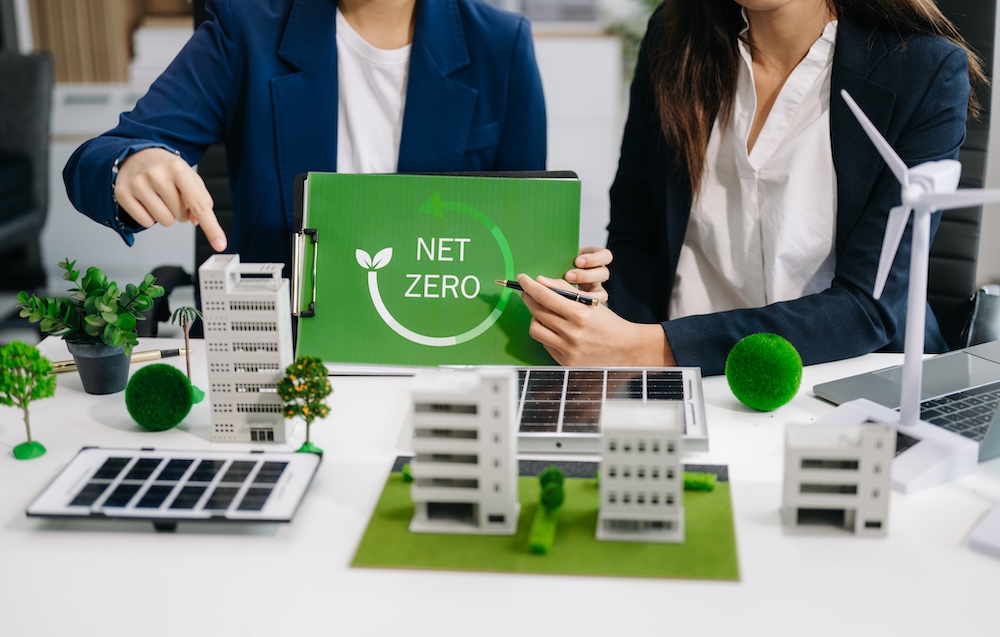Climate change is not a distant threat—it is a present-day crisis shaping the lives of billions. Rising greenhouse gas emissions from fossil fuels, deforestation, and industrial processes are driving extreme heatwaves, floods, droughts, and storms. Melting glaciers and rising seas threaten food security, water resources, biodiversity, and human health.
Achieving net-zero impact—where greenhouse gas emissions are reduced as close to zero as possible, with any remaining emissions balanced by removals—is one of the most important collective goals of our time. This requires systemic change alongside individual action, with ripple effects that can reshape industries, communities, and futures.
What Net-Zero Means
Net-zero is not simply about offsetting carbon. It is about:
- Reducing emissions at the source through efficiency, renewable energy, and sustainable practices.
- Transitioning systems—energy, transport, agriculture—toward circular and low-carbon models.
- Balancing the remainder through reforestation, soil carbon sequestration, and innovative carbon removal technologies.
When achieved, net-zero represents balance: what we emit is no greater than what Earth can reabsorb.
Steps for Households
Cut Energy Use and Embrace Renewables
Households can shrink emissions significantly by adopting energy efficiency measures such as LED lighting, Energy Star appliances, and smart thermostats. Adding rooftop solar or joining a community solar program deepens the impact by replacing fossil fuels with clean, renewable energy.
Conserve Water and Reduce Waste
Water-saving fixtures, shorter showers, and repairing leaks reduce energy-intensive water use. Composting, recycling, and refusing over-packaged goods extend resources within a circular economy, reducing landfill methane and conserving energy.
Rethink Transportation
Choosing walking, biking, or public transit reduces emissions while improving health. For drivers, switching to electric or hybrid vehicles—powered by renewables where possible—further reduces reliance on fossil fuels.
Use Offsets Wisely
For unavoidable emissions, households can invest in high-quality carbon offsets that support projects such as reforestation, renewable energy development, or regenerative agriculture.
Steps for Companies
Measure, Reduce, Transition
The first step is measurement: companies must track and disclose emissions across operations and supply chains. From there, reduction targets can be set and achieved through efficiency upgrades, low-carbon technologies, and renewable power adoption.
Transform Logistics and Waste
Reducing transportation emissions through electrified fleets, optimized delivery routes, and reduced air freight makes a significant impact. Circular packaging design, recycling systems, and material reuse help shrink a company’s footprint while cutting costs.
Leverage Carbon Offsets Responsibly
Offsets should not replace reduction efforts but can balance emissions that cannot yet be eliminated, especially in hard-to-abate industries.
System-Wide Actions
Policy and Governance
Governments play a crucial role in accelerating the shift. Policies such as renewable energy mandates, emissions caps, and climate-smart subsidies create frameworks for net-zero transitions. Citizens can push for these policies by voting, advocacy, and civic engagement.
Food Choices and Agriculture
Reducing meat consumption and embracing plant-based meals lowers agricultural emissions while supporting healthier diets. Supporting regenerative agriculture—farming that builds soil health, restores ecosystems, and sequesters carbon—further aligns food systems with climate goals.
Restoring Ecosystems
Reforestation and afforestation efforts not only draw down carbon but also restore habitats and improve biodiversity. Supporting organizations or local tree-planting efforts is a simple yet powerful way to participate.
Circular Economy Shifts
Repair, reuse, rent, and share models extend product lifecycles and reduce demand for virgin resources. Companies and individuals alike can commit to keeping resources in use and designing out waste.
Carbon Capture and Innovation
Emerging technologies such as direct air capture and carbon storage can complement natural solutions. Continued research and investment will help scale these technologies as part of the broader net-zero toolkit.
Final Thoughts
Achieving net-zero is not optional—it is essential to creating a livable planet. Each action, from switching a light bulb to reshaping corporate supply chains, creates ripple effects that add up. By embracing circular practices, renewable energy, sustainable food systems, and ecosystem restoration, households, companies, and governments together can shift the trajectory of climate change.
The path to net-zero is also a path to resilience: healthier communities, stronger economies, and a future where progress and planetary well-being align.









Reader Interactions